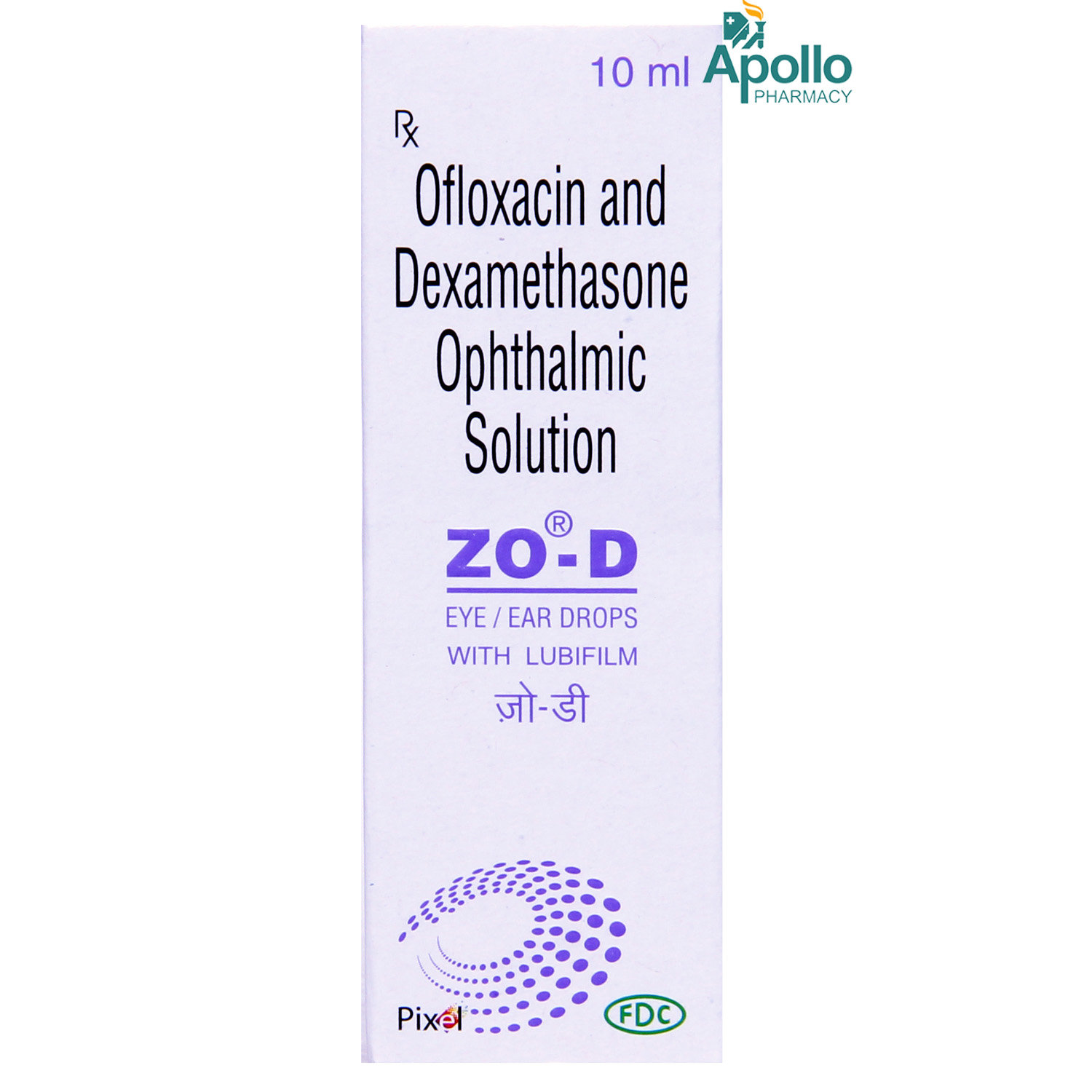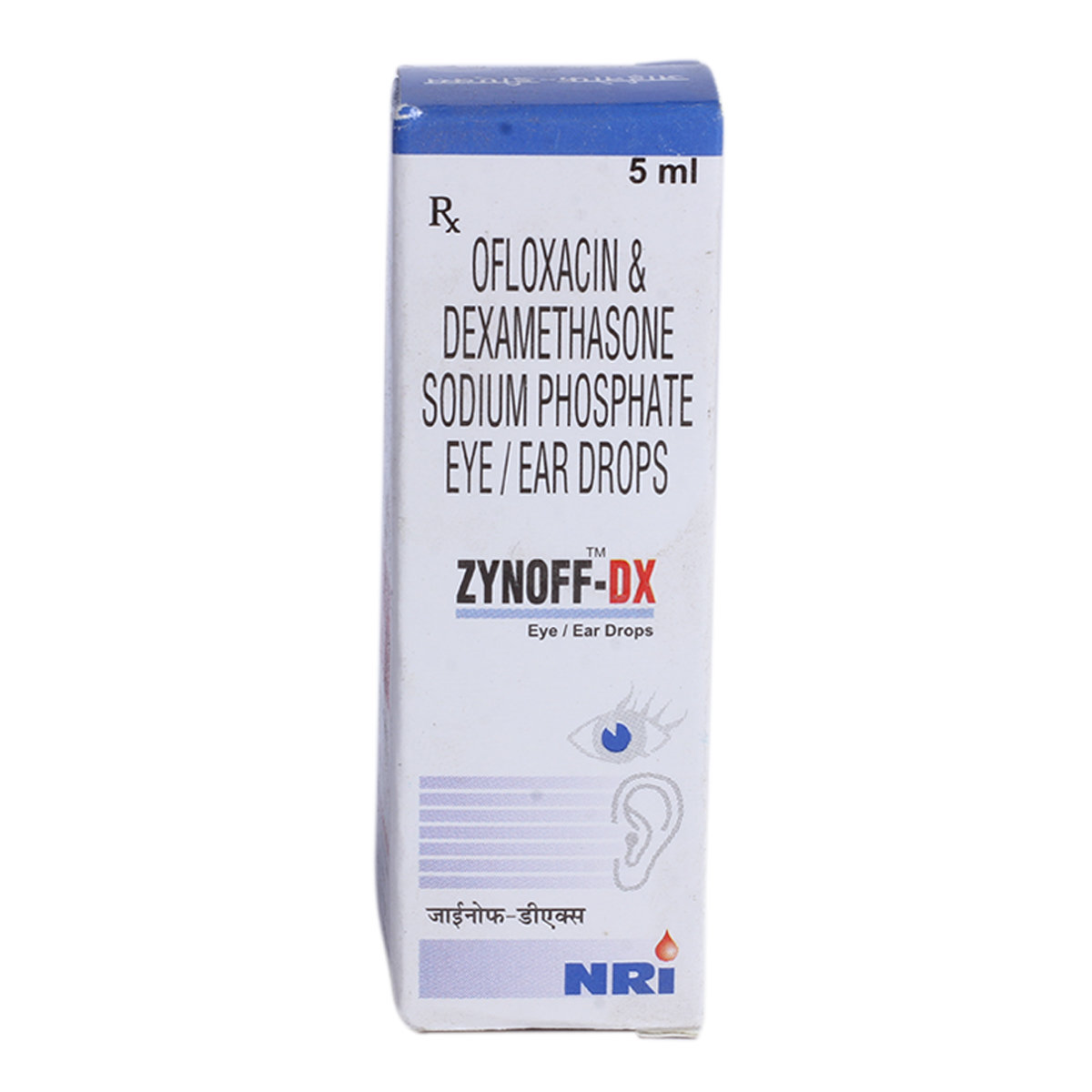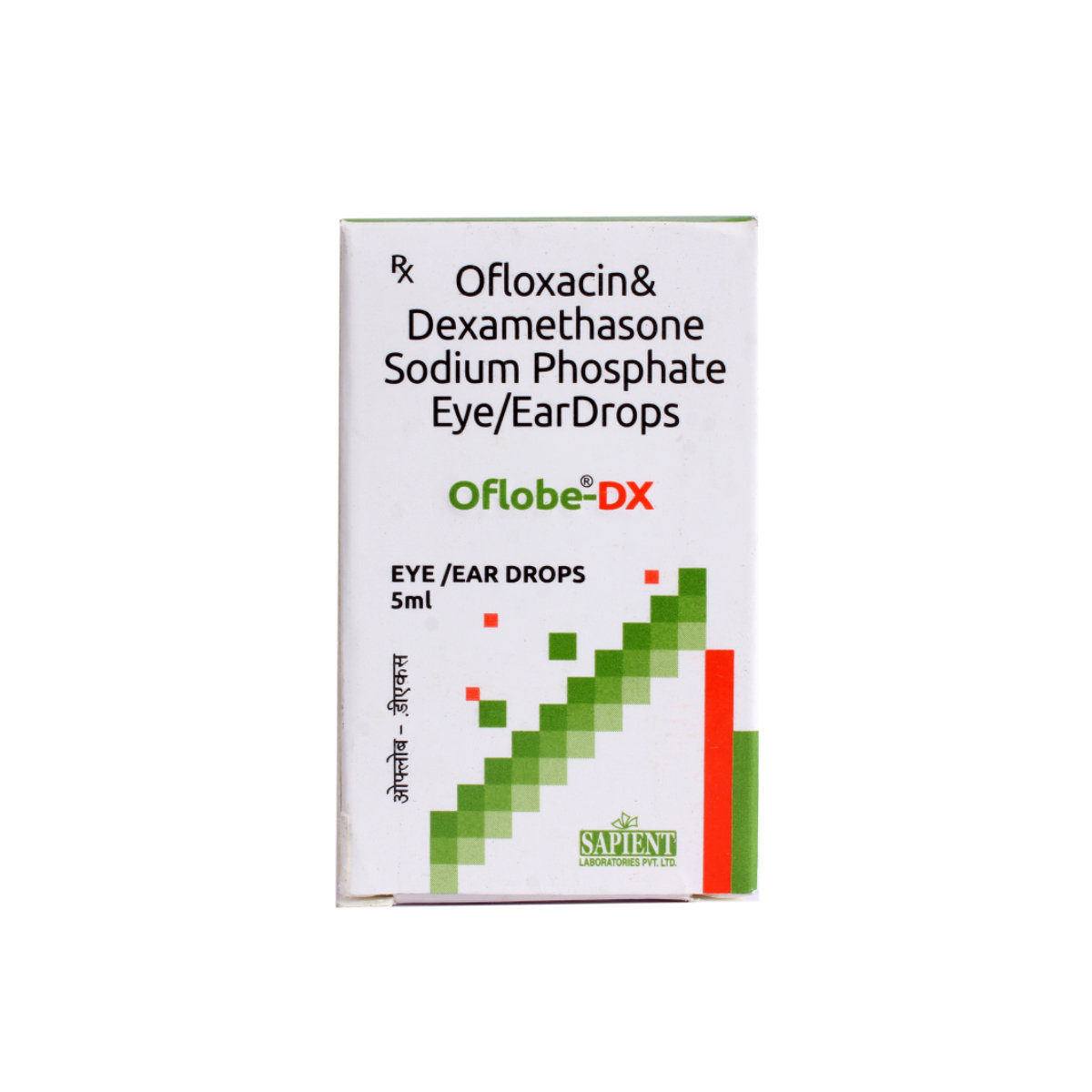Aflox-D Eye Drops

MRP ₹22.5
(Inclusive of all Taxes)
₹3.4 Cashback (15%)
know your delivery time
Provide Delivery Location
Composition :
Manufacturer/Marketer :
Consume Type :
Expires on or after :
Return Policy :

Secure Payment

Trusted by 8 Crore Indians

Genuine Products
Therapeutic Class
Country of origin
Manufacturer/Marketer address
Author Details
We provide you with authentic, trustworthy and relevant information
Disclaimer
Alcohol
Safe if prescribed
Limit alcohol consumption while on treatment with Aflox-D Eye Drops.
Pregnancy
Consult your doctor
There is limited data on how Aflox-D Eye Drops affects pregnancy. Please consult your doctor if you are pregnant or planning pregnancy before using Aflox-D Eye Drops.
Breast Feeding
Consult your doctor
It is not known if Aflox-D Eye Drops affects breastfeeding. Please consult your doctor before using Aflox-D Eye Drops if you are a breastfeeding mother.
Driving
Safe if prescribed
Aflox-D Eye Drops may cause side effects like temporary blurred vision, affecting your driving ability. Hence, do not drive or operate machinery in such cases. Drive only when you are alert and have clear vision.
Liver
Consult your doctor
Let your doctor know if you have any history of liver diseases before starting treatment with Aflox-D Eye Drops.
Kidney
Consult your doctor
Let your doctor know if you have any history of kidney diseases before starting the treatment with Aflox-D Eye Drops.
Children
Safe if prescribed
Aflox-D Eye Drops should be used for children only when recommended by a doctor.
Product Substitutes
About Aflox-D Eye Drops
Aflox-D Eye Drops is a combination of 'corticosteroid and antibiotic', primarily used to treat bacterial eye infections. Bacterial eye infection occurs when bacteria invade any part of the eyeball or its surrounding tissues, including the cornea (clear front surface of the eye) and the conjunctiva (thin membrane lining the outer eye and inner eyelids).
Aflox-D Eye Drops contains Dexamethasone and Ofloxacin. Dexamethasone belongs to the class of corticosteroids. It blocks the production of prostaglandins (chemical messengers) that make the affected area red, swollen, and itchy. Ofloxacin belongs to a class of drugs called quinolone antibiotics. It is bactericidal (kills bacteria) and works by inhibiting bacterial DNA gyrase, an enzyme required for the replication, transcription, and repair of the DNA.
Use Aflox-D Eye Drops in the dose and duration prescribed by your doctor based on your medical condition. Aflox-D Eye Drops is generally safe to use. However, some may experience side effects like eye discomfort, eye irritation, burning/stinging sensation, dryness, redness, and itching. Most of these side effects of Aflox-D Eye Drops do not require medical attention and gradually resolve over time. If these side effects persist longer, please consult your doctor.
If you are allergic to Aflox-D Eye Drops or any other medicines, please tell your doctor. Inform your doctor if you have any liver or kidney diseases, fungal infections, or heart problems before using Aflox-D Eye Drops. Pregnant and breastfeeding women should use Aflox-D Eye Drops with proper consultation and caution. Drive or operate machinery only when you do not experience any discomfort in the eyes after the usage of eye drops.
Uses of Aflox-D Eye Drops
Medicinal Benefits Mweb
Key Benefits
Aflox-D Eye Drops contains Dexamethasone and Ofloxacin. Dexamethasone is a corticosteroid and blocks prostaglandins' production (chemical messengers) that make the affected area red, swollen and itchy. Ofloxacin is a quinolone antibiotic that inhibits bacterial DNA gyrase, an enzyme required for DNA replication, transcription, and repair. Thus Aflox-D Eye Drops treats bacterial eye infections.
Directions for Use
Side Effects of Aflox-D Eye Drops
- Eye discomfort
- Eye irritation
- Burning/stinging sensation
- Dryness
- Redness
- Itching
Drug Warnings
Brief your medical history to the doctor if you are allergic to Aflox-D Eye Drops or any of its components. Please let your doctor know if you have a history of liver or kidney diseases, heart problems, glaucoma, cataracts, recent eye surgery, viral diseases of the conjunctiva and cornea, severe nearsightedness, diabetes, or fungal infections of the eye. Please consult your doctor if you are pregnant, planning pregnancy or breastfeeding before using Aflox-D Eye Drops. Avoid driving or operating machines since the administration of Aflox-D Eye Drops cause blurred vision for a while after using. Aflox-D Eye Drops should be used for children only when advised by a doctor.
Drug-Drug Interactions
Drug-Drug Interactions
Login/Sign Up
Using Mesoridazine together with Aflox-D Eye Drops 10 ml can increase the risk of an irregular heart rhythm that may be serious.
How to manage the interaction:
Taking Mesoridazine with Aflox-D Eye Drops 10 ml is not recommended, please consult your doctor before taking it. You should seek immediate medical attention if you develop sudden dizziness, lightheadedness, fainting, shortness of breath, or heart palpitations. Do not stop using any medications without talking to a doctor.
Coadministration of Aflox-D Eye Drops 10 ml with Quinidine can increase the risk or severity of irregular heart rhythms.
How to manage the interaction:
Taking Aflox-D Eye Drops 10 ml with Quinidine together is generally avoided as it can result in an interaction, it can be taken if your doctor has advised it. However, if you experience sudden dizziness, lightheadedness, fainting, shortness of breath, chest pain or tightness, rapid heartbeat, or memory loss, contact a doctor immediately. Do not discontinue any medications without consulting a doctor.
Coadministration of Aflox-D Eye Drops 10 ml with Pimozide can increase the risk or severity of irregular heart rhythms.
How to manage the interaction:
Taking Aflox-D Eye Drops 10 ml with Pimozide together can result in an interaction, it can be taken if your doctor has advised it. However, if you experience sudden dizziness, lightheadedness, fainting, shortness of breath, chest pain or tightness, rapid heartbeat, or memory loss, contact a doctor immediately. Do not discontinue any medications without consulting a doctor.
Coadministration of Aflox-D Eye Drops 10 ml with Saquinavir can increase the risk or severity of irregular heart rhythms.
How to manage the interaction:
Taking Aflox-D Eye Drops 10 ml with Saquinavir together is generally avoided as it can result in an interaction, it can be taken if your doctor has advised it. However, if you experience sudden dizziness, lightheadedness, fainting, shortness of breath, chest pain or tightness, rapid heartbeat, or memory loss, contact a doctor immediately. Do not discontinue any medications without consulting a doctor.
Using bepridil together with Aflox-D Eye Drops 10 ml drugs can increase the risk of an irregular heart rhythm that may be serious.
How to manage the interaction:
Taking Aflox-D Eye Drops 10 ml with Bepridil can cause an interaction, please consult your doctor before taking it. You should seek immediate medical attention if you develop sudden dizziness, lightheadedness, fainting, or fast or pounding heartbeats. Do not stop using any medications without consulting a doctor.
Coadministration of Aflox-D Eye Drops 10 ml with Dronedarone can increase the risk or severity of irregular heart rhythm.
How to manage the interaction:
Taking Aflox-D Eye Drops 10 ml with Dronedarone together can result in an interaction, it can be taken if your doctor has advised it. However, if you experience sudden dizziness, lightheadedness, fainting, shortness of breath, chest pain or tightness, rapid heartbeat, or memory loss, contact a doctor immediately. Do not discontinue any medications without consulting a doctor.
Using halofantrine together with Aflox-D Eye Drops 10 ml can increase the risk of an irregular heart rhythm that may be serious.
How to manage the interaction:
Taking Aflox-D Eye Drops 10 ml with Halofantrine can cause an interaction, please consult your doctor before taking it. You should seek immediate medical attention if you develop sudden dizziness, lightheadedness, fainting, shortness of breath, or heart palpitations. Do not stop using any medications without talking to a doctor.
The combination of Amiodarone and Aflox-D Eye Drops 10 ml may significantly increase the risk of an abnormal heart rhythm.
How to manage the interaction:
Although Amiodarone and Aflox-D Eye Drops 10 ml interact, it can be taken if prescribed by a doctor. If you get dizziness, lightheadedness, fainting, or fast or racing heartbeats, consult a doctor. Do not stop taking any medications without consulting a doctor.
Coadministration of Aflox-D Eye Drops 10 ml with Thioridazine can increase the risk or severity of irregular heart rhythms.
How to manage the interaction:
Taking Aflox-D Eye Drops 10 ml with Thioridazine together is generally avoided as it can result in an interaction, it can be taken if your doctor has advised it. However, if you experience sudden dizziness, lightheadedness, fainting, shortness of breath, chest pain or tightness, rapid heartbeat, or memory loss, contact a doctor immediately. Do not discontinue any medications without consulting a doctor.
Coadministration of Aflox-D Eye Drops 10 ml with Sotalol can increase the risk or severity of irregular heart rhythms.
How to manage the interaction:
Taking Aflox-D Eye Drops 10 ml with Sotalol together is generally avoided as it can result in an interaction, it can be taken if a doctor has advised it. If you experience sudden dizziness, lightheadedness, fainting, shortness of breath, chest pain or tightness, rapid heartbeat, or memory loss, contact a doctor. Do not discontinue any medications without consulting a doctor.
Drug-Food Interactions
Drug-Food Interactions
Login/Sign Up
Drug-Diseases Interactions
Drug-Diseases Interactions
Login/Sign Up
Drug-Drug Interactions Checker List
- PHENYTOIN
- PHENOBARBITONE
- EPHEDRINE
- RITONAVIR
- COBICISTAT
- RIFAMPICIN
Habit Forming
Diet & Lifestyle Advise
- Manage stress, eat healthily, drink plenty of water, exercise regularly, and get plenty of sleep.
- Eat food rich in antioxidants such as berries, spinach, kidney beans, dark chocolate, etc.
- Know your allergy triggers, such as pollen, dust and other factors.
- Do not rub your eyes even though some ophthalmic drugs make your eye itchy.
- If you wear contact lenses: Clean and replace contact lenses more often. Never share contact lenses. Always remember to wash your hands before inserting and after removing the contact lens.
- Avoid staring at digital screens for longer durations. Rest your eyes every 20 minutes.
- Avoid or limit the intake of alcohol and caffeine.
All Substitutes & Brand Comparisons
RX
Out of StockOculone D Eye Drop
Yash Pharma Laboratories Pvt Ltd
₹11.5
(₹1.04/ 1ml)
48% CHEAPERRX
Out of StockTariflox D Eye Drop 10 ml
Cipla Ltd
₹20
(₹1.8/ 1ml)
11% CHEAPERRX
Out of StockProxo Eye Drop
₹20
(₹1.8/ 1ml)
11% CHEAPER

Have a query?
Buy best Ocular products by
Entod Pharmaceuticals Ltd
Ajanta Pharma Ltd
Sunways (India) Pvt Ltd
Sun Pharmaceutical Industries Ltd
Cipla Ltd
Micro Labs Ltd
Allergan Healthcare India Pvt Ltd
Intas Pharmaceuticals Ltd
Raymed Pharmaceuticals Ltd
Nri Vision Care India Ltd
FDC Ltd
Jawa Pharmaceuticals India Pvt Ltd
Indoco Remedies Ltd
Sapient Laboratories Pvt Ltd
Senses Pharmaceuticals Pvt Ltd
Centaur Pharmaceuticals Pvt Ltd
Neomedix Healthcare India Pvt Ltd
Aromed Pharmaceuticals
Optho Remedies Pvt Ltd
Aurolab
Austrak Pvt Ltd
Lupin Ltd
Mankind Pharma Pvt Ltd
Zivira Labs Pvt Ltd
Optho Pharma Pvt Ltd
Synovia Life Sciences Pvt Ltd
Akumentis Healthcare Ltd
Eyekare
His Eyeness Ophthalmics Pvt Ltd
Protech Remedies Pvt Ltd
Runyon Pharmaceutical Pvt Ltd
Alcon Laboratories Inc
Syntho Pharmaceuticals Pvt Ltd
Alembic Pharmaceuticals Ltd
Bell Pharma Pvt Ltd
Klar Sehen Pvt Ltd
Sentiss Pharma Pvt Ltd
Irx Pharmaceuticals Pvt Ltd
Optho Life Sciences Pvt Ltd
Phoenix Remedies Pvt Ltd
Alkem Laboratories Ltd
Doctor Wonder Pvt Ltd
Hicare Pharma
Ipca Laboratories Ltd
Neon Laboratories Ltd
Okulus Drugs India
Pharmtak Ophthalmics (I) Pvt Ltd
Berry & Herbs Pharma Pvt Ltd
Glow Vision Pharmaceuticals
Kaizen Drugs Pvt Ltd
Choroid Laboratories Pvt Ltd
Indiana Opthalamics Pvt Ltd
Optica Pharmaceutical Pvt Ltd
Pharmatak Opthalmics India Pvt Ltd
Samarth Life Sciences Pvt Ltd
Vibgyor Vision Care
Mofon Drugs
Novartis India Ltd
Pharmia Biogenesis Pvt Ltd
Zydus Cadila
Appasamy Ocular Devices Pvt Ltd
Leeford Healthcare Ltd
Medivision Pharma Pvt Ltd
Orbit Life Science Pvt Ltd
X-Med Royal Pharma Pvt Ltd
Zee Laboratories Ltd
Aarma Laboratories
Guerison MS Inc
Laborate Pharmaceuticals India Ltd
Xtas Pharmaceuticals
Accurex Biomedical Pvt Ltd
Blucrab Pharma Pvt Ltd
Does Health Systems Pvt Ltd
Flagship Biotech International Pvt Ltd
Lavue Pharmaceuticals Pvt Ltd
Nutrilis Healthcare Pvt Ltd
Ursa Pharm India Pvt Ltd
Vee Remedies
Vyonics Health Care India Pvt Ltd
Warren Pharmaceuticals Pvt Ltd
Abbott India Ltd
Accvus Pharmaceuticals
Akums Drugs & Pharmaceuticals Ltd
Cadila Healthcare Ltd
Carevision Pharmaceuticals Pvt Ltd
Dey's Medical Stores (Mfg) Ltd
East West Pharma India Pvt Ltd
Eyedea Pharmaceuticals Pvt Ltd
Nimbus Healthcare Pvt Ltd
Ocuris Pharmaceuticals Pvt Ltd
Sherings Pharmaceuticals
Tarks Pharmaceuticals Pvt Ltd
Vcan Biotech
Vision Medilink
Aice Health Care Pvt Ltd
Appasamy Pharmaceuticals Pvt Ltd
Asperia Lifescience Pvt Ltd
Beatum Healthcare Pvt Ltd
East India Pharmaceutical Works Ltd
Grevis Pharmaceutical Pvt Ltd







